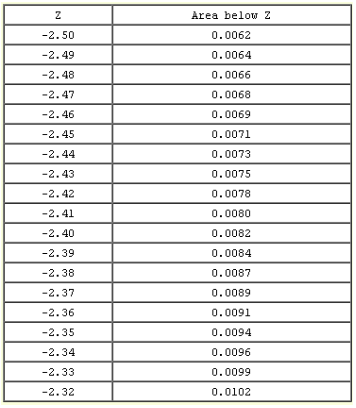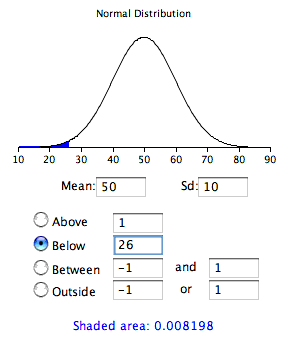Standard Normal Distribution
Jump to navigation
Jump to search
Normal distributions do not necessarily have the same means and standard deviations.
- Standard normal distribution
A normal distribution with a mean of 0 and a standard deviation of 1
Area below Z
- The first column titled "Z" contains values of the standard normal distribution; the second column contains the area below Z.
- Since the distribution has a mean of 0 and a standard deviation of 1, the Z column is equal to the number of standard deviations below (or above) the mean.
- Example
- a Z of -2.5 represents a value 2.5 standard deviations below the mean.
- The area below Z is 0.0062.
Formula
A value from any normal distribution can be transformed into its corresponding value on a standard normal distribution using the following formula:
Z = (X - μ)/σ
Where: Z is the value on the standard normal distribution, X is the value on the original distribution, μ is the mean of the original distribution and σ is the standard deviation of the original distribution.
- Example
As a simple application, what portion of a normal distribution with a mean of 50 and a standard deviation of 10 is below 26? Applying the formula, we obtain
Z = (26 - 50)/10 = -2.4
- From the table above, we can see that 0.0082 of the distribution is below -2.4.
- There is no need to transform to Z if you use the applet as shown below.
Standardizing the Distribution
If all the values in a distribution are transformed to Z scores, then the distribution will have a mean of 0 and a standard distribution. This process of transforming a distribution to one with a mean of 0 and a standard deviation of 1 is called standardizing the distribution
Quiz
}


